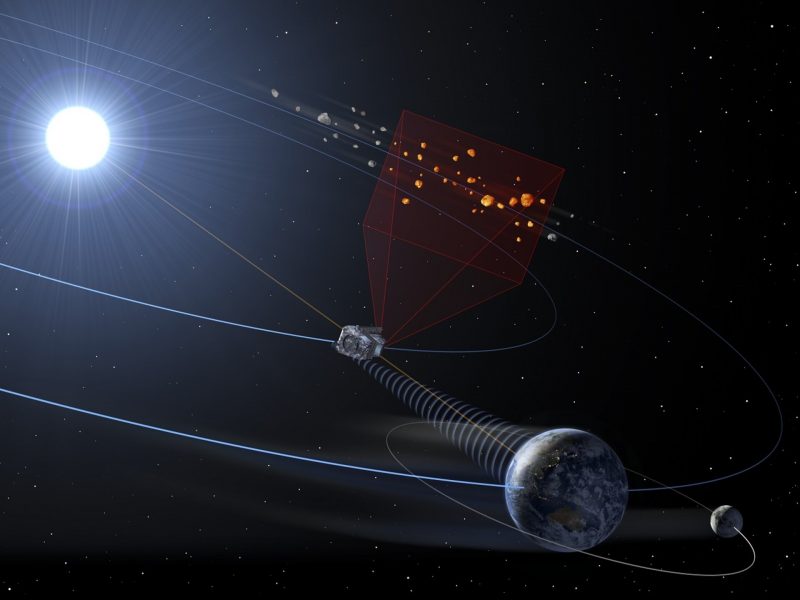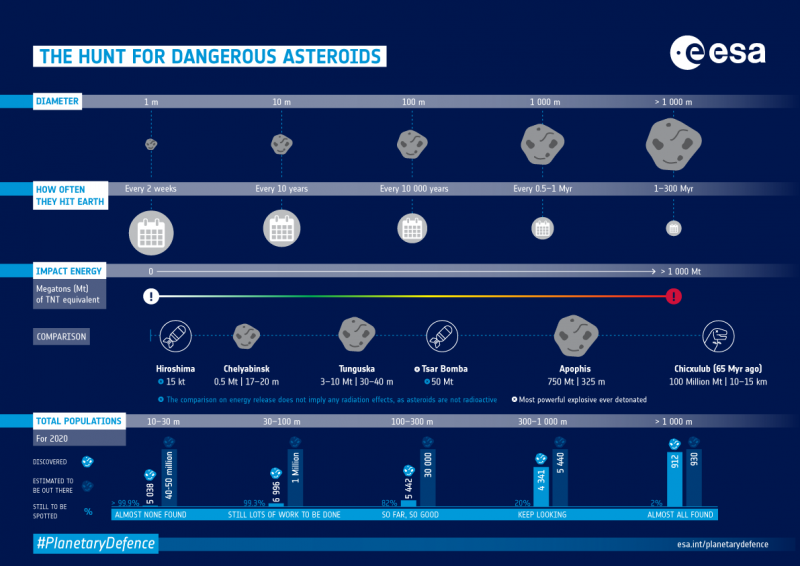
ESA originally published this article on February 17, 2023. Read the original article here. Edits by EarthSky.
Spotting asteroids near the sun
Astronomers have gotten good at detecting even small asteroids that might be headed toward Earth. But an unknown number of asteroids have paths that might carry them toward us from the sun’s direction. And it’s tough – or impossible – to spot those asteroids coming toward us. ESA’s planned NEOMIR mission will orbit between Earth and the sun at the first Lagrange point (L1). It’ll act as an early warning system for asteroids – 65 feet (20 meters) and larger – that instruments on Earth’s surface cannot see.
NEOMIR stands for Near-Earth Object Mission in the Infrared.
Last chance to get a moon phase calendar! Only a few left. On sale now.
No warning for Chelyabinsk
No one saw the Chelyabinsk meteor coming on February 15, 2013. Just after sunrise on a calm and sunny winter’s day, a 65-foot (20-meter) asteroid struck the atmosphere over the Ural Mountains in Russia at a speed of more than 11 miles per second (18 km/s).
This relatively small rock approached Earth from very near the direction of the sun. It exploded in the atmosphere and created a shockwave that damaged thousands of buildings, breaking windows and injuring roughly 1,500 people from flying shards of glass. Moreover, it was the largest asteroid to strike Earth in over a century.
Statistically, asteroids this size strike Earth about once every 50-100 years. Larger asteroids are far less common, but do a great deal more damage. Fortunately, the larger asteroids are much easier to detect.
In fact, we have discovered almost all asteroids larger than 1/2 mile (1 km) in size. However, small and medium-sized asteroids are more common and can still do great damage. Luckily, warning times of a few days can be enough for local authorities to notify the public to keep away from windows or even to evacuate a local area.

Early warning for asteroids near the sun
NEOMIR gives us an opportunity to deflect a large asteroid maybe years in advance. And, it can provide data for local authorities to keep communities informed of possible air bursts weeks ahead. NEOMIR will fill a gap in our current asteroid-detection capabilities.
The NEOMIR mission will orbit at the first Lagrange point (L1) between the sun and Earth. Thus, it will have a constant view of asteroids that may come toward Earth from the direction of the sun. Situated outside of Earth’s distorting atmosphere, NEOMIR will observe in infrared light. It will monitor a close ring around the sun that is impossible to observe from the ground.
By making observations in the infrared part of the light spectrum, NEOMIR will detect the heat emitted by asteroids themselves. This heat isn’t drowned out by sunlight. Earth’s atmosphere absorbs this thermal emission, but from space NEOMIR will be able to see closer to the sun than we currently can from Earth.
So, asteroids 65 feet (20 meters) and larger heading toward Earth should be detected by NEOMIR at least three weeks in advance. In the worst-case scenario, in which the asteroid is spotted passing near the spacecraft, we’d get a minimum of three days’ warning. That’s the fastest an asteroid could move from L1 to Earth.
Mission status
NEOMIR is currently in the early mission study phase. Eventually, a NEOMIR mission planned launch date would be around 2030. NEOMIR would complement NASA’s NEO Surveyor mission. The U.S.-funded mission should fulfill the U.S. Congress mandate to discover 90% of near-Earth objects larger than 460 feet (140 meters) in diameter. NEOMIR is designed to focus on imminent impactors of any size.
Bottom line: NEOMIR – an early asteroid warning system – will target asteroids near the sun. It will look for and monitor asteroids 65 feet (20 m) and larger.











